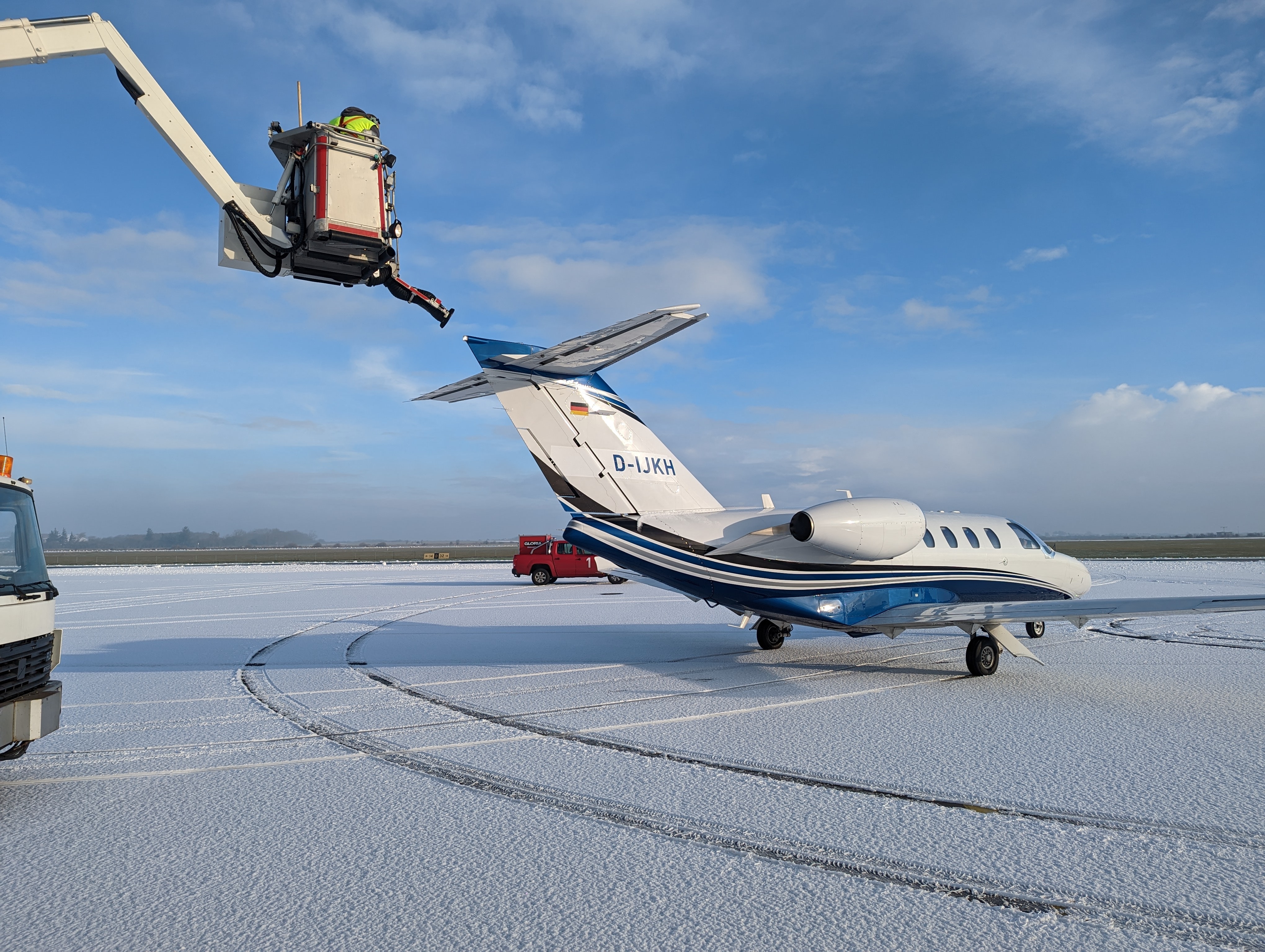The Blue Angel ecolabel, also known as the German Ecolabel, is a internationally recognized label that denotes environmentally friendliness for a wide range of products. When it was developed in 1978 by Germany's Department of the Environment, it became the first of its kind in the world. 55 years later, it has become one of the most well-known ecolabels worldwide and continues to set the standard for eco-friendly products and services. Individual consumers and organizational purchasers recognize this symbol as a beacon that highlights ecologically superior products and promotes environmentally conscious consumption. One of the product categories that is covered under the Blue Angel label is Movement Area De-icers for airfields. The basic requirements cover biodegradability, chemical oxygen demand, limitations on ingredients, exclusion of substances, wastewater toxicity, fitness for use, and other elements; however, we will shine light on the biodegradability requirements specifically in this article.
What are Airfield Movement Area De-icers?
Put simply, de-icing agents are chemical agents that defrost and lower the freezing point to provide anti-freezing protection (preventative) and de-icing (reactive). One example of a leading de-icer which has obtained the Blue Angel ecolabel is this product made by Eastman. Formates have become the accepted standard on the EU market, while de-icing salt, urea, and glycols are no longer used in this sector.
How are De-icers Used?
Freezing rain and snowy conditions are not foreign to the German climate. Unfortunately, this means travel facilities need to be prepared to operate in these conditions whenever possible. Operating in these conditions requires German airfields to not only use mechanical clearing technologies, but also movement area de-icers. These de-icers improve grip on runways, taxiways, and other maneuvering/parking areas. These de-icers are critical for flight safety to be maintained during take-off, landing, and taxiing.
After use, these products typically meet one of two different fates. Most often, they make their way into the public wastewater system via the sewers. Alternatively, they can also go directly into the ground, appearing in groundwater and surface waters. These two common fates only stress the importance of creating de-icers with environmentally friendliness in mind.
Biodegradability Criteria for Movement Area De-icers for Airfields
For a movement area de-icer to obtain the Blue Angel ecolabel, it needs to meet certain biodegradability-related criteria. The organic ingredients in the product greater than 1% by mass must be classified as being readily biodegradable. In addition, the whole product must exhibit good biodegradability in municipal waste water treatment plants. The Zahn-Wellens test (OECD 302B, ISO 1988, or Regulation (EC) 440/2008, C.9) should be used as a model. Inorganic product components are not taken into account in this context.
Ready Biodegradability Verification
There are a wide range of tests that can be performed and submitted to verify the ready biodegradability of the organic ingredients (OECD 301 A-F or Regulation (EC) 440/2008, C.4 A-F, or the relevant ISO standard). Specifically, here is a list of the acceptable test methods:
- DOC - Die Away Test (OECD 301 A, EG C.4A, DIN EN ISO 7827)
- Modified OECD screening test (OECD 301 E, EG C.4B, DIN EN ISO 7827)
- CO2 evolution test (OECD 301 B EG C.4C, DIN EN ISO 9439)
- Manometric respirometry test (OECD 301 F, EG C.4D, DIN EN ISO 9408)
- Closed bottle test (OECD 301 D, EG C.4E, DIN EN ISO 10707)
- MITI test (I) (OECD 301 C, EG C.4 - F)
- CO2 headspace test (OECD 310, DIN EN ISO 14593)
- Closed bottle test in two phases (ISO 10708)
For substances to be considered readily biodegradable, they must meet the following minimum degradation values within a 10-day window during the 28-day study:
- Tests based on dissolved organic carbon (DOC): 70%
- Tests based on oxygen consumption or carbon dioxide generation: 60% of the theoretical maximum.
Product Biodegradability Verification
As previously mentioned, along with the organic ingredients needing to be biodegradable, the whole product must also exhibit good biodegradability in wastewater treatment plants. To verify the biodegradability of the whole product, the Zahn-Wellens test should be performed and submitted according to one of the OECD 302 B, ISO 9888, or Regulation (EC) 440/2008, C.9 standards. To exhibit good biodegradability, a DOC or chemical oxygen demand (COD) reduction of at least 80% must be achieved within a 7-day window.
Summary
Movement area de-icers used in German airfields play a critical part to maintaining their nation's travel operations. After using these products, they often find their way into public waste water systems or seep into the ground. This has led to increasing demand for environmentally friendliness in these products. One way products can demonstrate their commitment to environmental friendliness is by obtaining the Blue Angel ecolabel. There are many requirements a product must meet related to environmental friendliness, with one portion being related to biodegradability. To meet the biodegradability requirements for this ecolabel, the organic ingredients must be readily biodegradable and the whole product must demonstrate good biodegradability in municipal waste water treatment plants. Common test methods used to verify these claims are OECD 301 A-F for ready biodegradability and OECD 302 B for whole product biodegradability in waste water treatment facilities.

